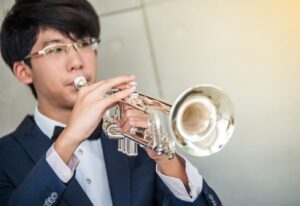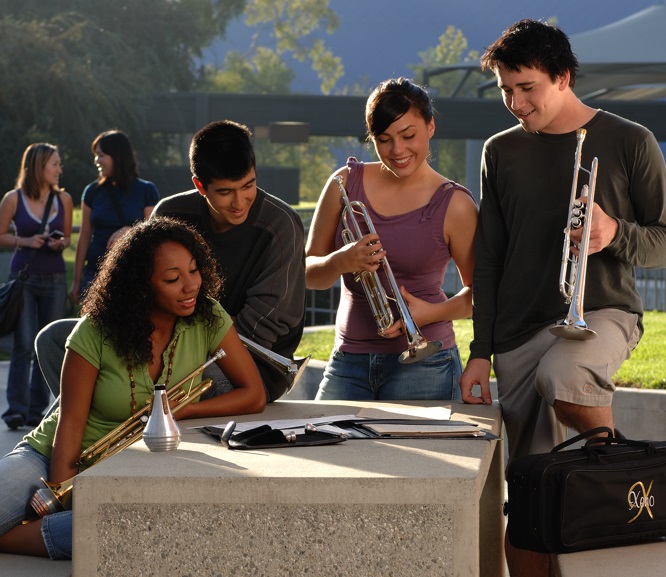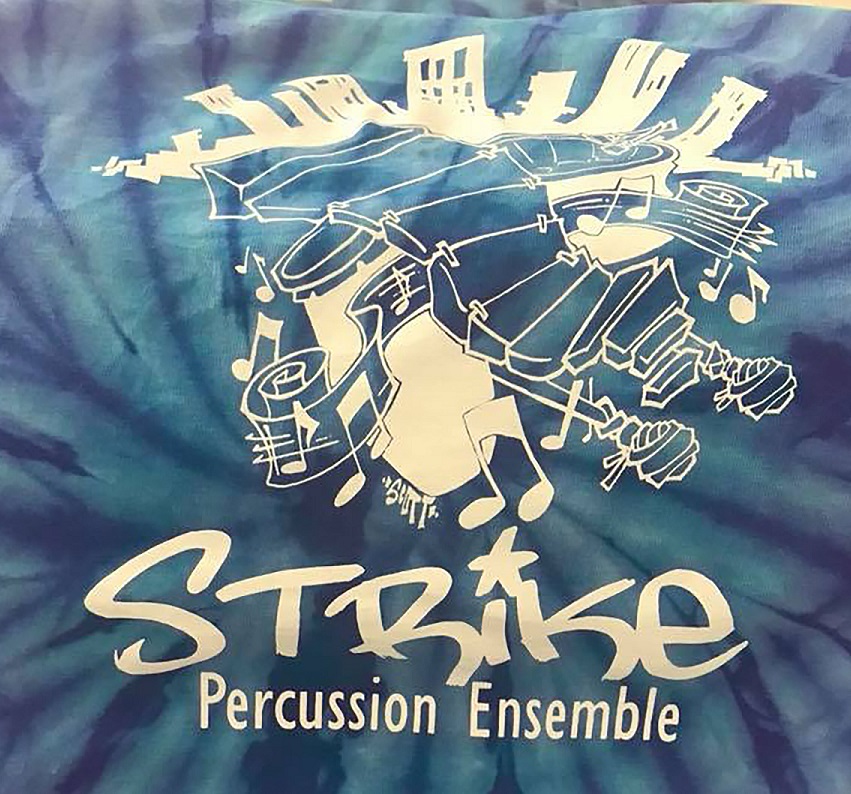Tagged Under:
Choosing Student Leaders
Every music program needs a strong leadership structure. Find out what to look for in student leaders and how to select them.
Student leaders are crucial to the success and culture of a music program. If you’re like me, you probably have the mindset of if you want it done right, you have to do it yourself. However, everyday it’s clear that I need help! Creating a leadership structure that works best for your program will help you maintain excellence and keep things running smoothly. Substitute teachers tell me that they like subbing for my colleague and me because the students know what they need to do and how to do it.
This can only be done with good leaders and a solid leadership structure. In a future article I will share more about how you can use this structure to keep things going when you’re absent, but first we need to explore a leadership structure and how to choose student leaders. These tips are transferable across any ensemble whether it is band, choir or orchestra!

What are the roles?
Most programs have some sort of established leadership roles. Depending on the ensemble and perhaps the size and scale of the program, this can be a variety of positions including:
- President: Acts an advisor and liaison between the director and students. They help plan events and keep students informed about what is going on in the department.
- Vice President: Assists the president as needed and stepping in when the president is absent. Also serves as an advisor and liaison between the director and students.
- Social Chair: Maintains a positive culture and climate in the ensemble through planning social activities.
- Publicity Manager: Shares important information, advertising events and sharing successes of the ensembles. This person is responsible for ensemble social media pages.
- Wardrobe Coordinator: Manages and distributes concert attire, ensuring that students have all the components of attire before a concert.
- Ensemble Managers: Manages the day-to-day operations of rehearsal such as attendance, seating charts, and setup and breakdown.
- Section Leaders: Manages their sections so musicians are prepared for rehearsal and performance, distributing music and running sectionals.
- Student Directors: Leads the ensemble in the director’s absence or as needed. Student directors might be responsible for rehearsing and performing a piece on their own.
- Drum Majors: Directs the pep/marching band at games and other performances. Drum majors may be responsible for leading rehearsals in the director’s absence or as needed.
- Librarian: Maintains the music library, organizing pieces, pulling music for reading and rehearsing, and distributing parts to section leaders.
- Stage Manager: Responsible for equipment and logistics of a concert or performance and helps with set ups and transitions between ensembles.
You may have other positions or have heard of others from friends and colleagues. Incorporate some or all these roles into your program. Or, add or take away certain responsibilities that fit the needs of your ensemble. For me, the number of positions and what they are responsible for depends on the year because the needs of the ensemble changes from year to year!

How do you choose leaders?
Choosing leaders can be challenging. In our roles as directors, we never want to see students hurt or upset when they don’t see their desired outcome whether it’s an audition or a leadership role selection.
Application: Some leadership positions must be appointed by the director simply because as the music teacher, you know your students best to determine their success in a particular role. I recommend creating an application for certain positions — it’s a good way to have concrete evidence to justify your decisions. I apply a points system to reflect the quality of responses or activities like honor festivals and prior leadership positions.
The director must choose leaders for roles that require a stronger musician and teaching-type student such as section leader, drum major or student director. We all have students who are stronger musicians than others, but that doesn’t mean that every leader needs to be your highest performing musician. These students might be a better fit elsewhere.
Election: Some leadership roles are more of a reflection of the group and the students in it. Who do the students want to represent them in these roles? For these positions, an election is more appropriate. Roles like president, vice president, social chair and publicity manager center around the student experience, so the students should choose their peers who are going to serve them.
Give students a chance to express their interest, give speeches and let them vote! Regardless of who you might think is best in that role, keep your opinions out of it. Students should feel comfortable with the leaders representing them. They want to trust that the leader is on their side when it comes to expressing their wants and needs to you, the director. (One small note on elections: Consider how you want students to be able to run. Can they nominate themselves or do you want others to nominate them and second the nomination?)
Natural Selection: One other way that you might consider is letting the chips fall into place on their own. For a role like section leaders, you will see a natural rising of a leader in each section. Hopefully this student is someone you see as a strong musician, who the students respect as a leader. Oftentimes students are pretty self-aware of their role within a section. They may serve a worthy purpose in the section that is not the section leader responsible for leading sectionals. This could be a social role or an organizational role. If you allow natural leaders to rise above the rest, the answer for who you should choose as a section leader may be staring you in the face. This can be useful at the beginning of a school year. Send the students out to sectionals and ask them to introduce themselves and do a short group warm-up. Walk around and see the dynamics in each section, which may give you some clarity on future decisions.

Leadership Retreat
A leadership retreat can be helpful in many ways. It gives you a chance to express what you look for in a leader for your ensemble and a way to train them to be successful regardless of what leadership role they take on.
Story time: The first time we held a leadership retreat at our school, it was out of panic. We were going into a new school year and didn’t see any clear leaders who were ready to step up like the student leaders from prior years. We decided to hold a leadership retreat. The intent of the retreat was not to meet and prepare the leaders we had, but rather to find out which students wanted to learn to become leaders and start the process of priming them for success. We left that day feeling more confident that we had strong students who wanted to be leaders.
The structure of your retreat may vary and should be organized to reflect the needs of your ensemble, department and student leaders. What do you need for your group? What do your leaders need to be successful?
Some things to consider covering:
- Ensemble goals (short term and long term)
- Section goals (short term and long term)
- How to run a sectional
- Creating effective group warm-ups
- Engagement
- Social events
- Climate and culture

Qualities of a leader
What makes a good leader? There are many qualities that most people agree that good leaders should possess. However, every leader is unique. You can tell who is ready to be a leader in your program because you see them serve the needs of the ensemble. Sometimes a student demonstrates a unique quality that makes them a good leader for the band as a whole, while others are more suited to serve in a supporting role.
I encourage you to ask yourself these questions to help determine if a student is ready to be a leader:
- What is their attitude in rehearsal?
- How do they behave at public events like games, performances, auditions, festivals, field trips, etc.?
- What do other students think of this student?
- What qualities do they have that other students might not have?
- What qualities are necessary for them to be successful in the role they are being considered for?
- Do they want to be a leader?
This isn’t an exhaustive list of questions that will make a decision clear or easy. However, these will capture a good picture of the student as a leader. It helps you reflect on their behaviors in and out of rehearsal as well as how they would be respected by their peers.
The final question — “Do they want to be a leader?” — can be tricky, but it’s also very important. Just because a student doesn’t want to be a leader doesn’t mean they can’t be a leader. On the flip side, just because a student wants to be a leader doesn’t mean they should. If you find that a student wants to be a leader mainly for their college applications, they might not be the best choice. However, if they want to be a leader to better your program, then that’s a different story.

Kids always step up
If you’re ever concerned about having the right leaders for your group, let me tell you a little secret: You will always find great leaders for your group because students always step up. If you think you’re going to have a lull year because a dynamite class just graduated, think again. Student leaders not only want to have a good experience, they also want to provide good experiences for their fellow band mates. These are the students who always step into the roles left vacant by their peers who they looked up to in previous years.
Everyone is a leader
One final thought on leadership that you must highlight to your entire class: Everyone is a leader. While you may be choosing leadership positions and roles for students to serve in, every single student in your program can and should behave like a leader.
This is the culture that I strive to have: A program where every student demonstrates the qualities of a leader. Every student is a model for each other of how to behave, represent themselves, prepare and perform at the highest level. I’m still trying to achieve this utopia in my program, but I know it benefits everyone if this is your expectation.
___________________________________
Student leaders have had a big impact on the success of my ensembles at Brunswick High School. Over the years, I have looked to these students for advice, and I trust them with important roles and responsibilities that I was afraid to let go of early in my career. Their leadership has led to a more positive culture in our program.
As directors, we have our own goals, but these leaders know what their peers are looking for in their music experience. We must listen to them to provide a good experience for all our students. That’s what makes them want to come back and make new students join band. I am very grateful for their service and am excited to share the work they have done in my next article on student leadership.















